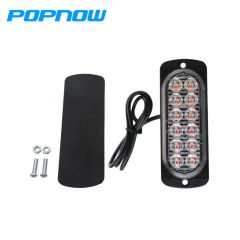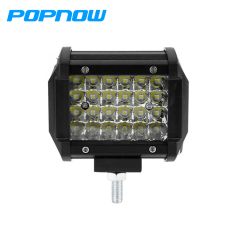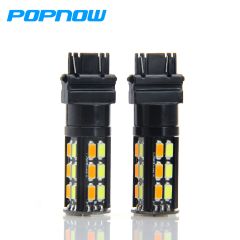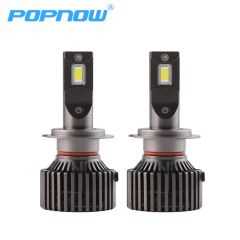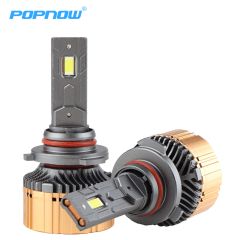The reason why some vehicles need to install decoders when installing LED car headlights is mainly related to the design of their original vehicle electrical system. Here are several situations that may require the installation of decoders:
CAN Bus System
Many modern vehicles use CAN bus systems for communication and data exchange between electronic components. When installing LED bulbs, the low power consumption of LED bulbs may be incompatible with the CAN bus system, resulting in system errors or warning messages. Decoders can adjust the current consumption of LED bulbs to make them compatible with the CAN bus system and avoid malfunctions.
Pulse Width Modulation (PWM):
Some vehicles use PWM technology to adjust the brightness of lights, especially in the Daytime Running Light (DRL) function. However, LED headlights require a constant current supply rather than pulse power from the PWM system. If LED bulbs are incompatible with vehicles configured with PWM, flashing bulbs or bulbs that turn off after a few minutes may occur. In this case, installing PWM decoders is necessary to eliminate pulses and provide constant current to LED headlights.
Daytime Running Light (DRL):
Some vehicles reduce the voltage of headlights during the day to save energy and reduce the brightness of bulbs to meet the requirements of daytime running lights. However, when using LED bulbs, this may cause compatibility issues. Decoders can help solve these problems and ensure that LED headlights work properly in DRL mode.
What is a CAN bus system?
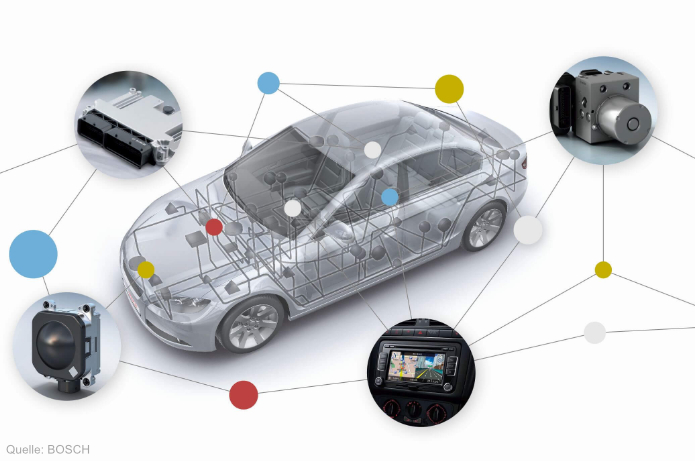
A CAN bus system is a communication network widely used in modern vehicles to facilitate data exchange and communication between various electronic components within the vehicle. The CAN (Controller Area Network) bus was originally developed by Bosch in the 1980s and has since become an industry standard in automotive engineering.
The CAN bus system consists of interconnected electronic control units (ECUs) distributed throughout the vehicle. These ECUs, also known as nodes, communicate with each other via the CAN bus network, exchanging data and commands to coordinate the operation of different systems within the vehicle.
The primary purpose of the CAN bus system is to enable real-time communication between ECUs, allowing them to share information and coordinate their operations to control various functions within the vehicle. This includes managing engine performance, transmission control, braking systems, airbag deployment, climate control, entertainment systems, and more.
The CAN bus utilizes a serial communication protocol to achieve high-speed data transmission over twisted pair wiring within the vehicle. The protocol allows multiple ECUs to communicate simultaneously on the same network, using priority messages to ensure efficient data exchange.
A key feature of the CAN bus is its robustness and fault tolerance. The network is designed to continue operating normally even if one or more nodes fail or communication lines are disturbed. Additionally, the CAN bus system is highly scalable, allowing new ECUs and functionalities to be added without significant changes to the overall network architecture.
Overall, the CAN bus system plays a crucial role in modern vehicles, facilitating seamless integration and coordination of electronic systems, thereby enhancing performance, safety, and comfort for drivers and passengers.
What CANBUS decoding problems will be encountered when installing LED car headlights?
When installing LED car headlights, you may encounter several CANBUS decoding-related problems:
CANBUS Error Warnings: Due to the low power consumption of LED bulbs, they may be incompatible with the vehicle's original CANBUS system. This may cause the vehicle's CANBUS system to mistakenly interpret LED bulbs as faulty or abnormal, triggering warnings or error messages displayed on the dashboard.
Bulb Flickering:
The CANBUS system may detect fluctuations in the current of LED bulbs, causing the bulbs to flicker or be unstable when starting. This flickering may affect the stability and visibility of the lights, negatively impacting driving safety.
Bulb Shutdown:
Sometimes LED bulbs may suddenly turn off after a period of time. This may be because the CANBUS system mistakenly interprets LED bulbs as faulty and takes measures to shut off the bulbs to prevent further damage.
Unstable Current:
The CANBUS system may not be able to regulate the current of LED bulbs stably, resulting in uneven or unstable light brightness. This may affect the vehicle's lighting performance and visibility.
Daytime Running Light (DRL) Issues:
Some vehicles' DRL systems may be incompatible with LED bulbs, causing LED bulbs to malfunction in DRL mode. This may result in bulb flickering or unstable light.
These problems may affect the performance, reliability, and safety of LED car headlights, so it is important to choose the appropriate CANBUS decoder when installing LED bulbs to address potential compatibility issues.
How to solve decoding problems during the installation of LED car headlights?
Solving decoding problems during the installation of LED car headlights typically requires the following measures:
Install CANBUS Decoder:
CANBUS decoders are specially designed devices to solve compatibility issues between LED headlights and the vehicle's CANBUS system. Installing CANBUS decoders can adjust the current and signals of LED bulbs to make them compatible with the vehicle's electrical system, avoiding issues such as error warnings or flickering.
Choose LED Headlights with Better Compatibility:
When purchasing LED headlights, choosing products with better compatibility is also a way to solve decoding problems. Some LED headlight products are specifically designed to be compatible with various CANBUS systems in vehicles, reducing compatibility issues during the installation process.
Check Power Lines and Connections:
When installing LED headlights, it is important to ensure that the power lines and connections are correctly and securely connected. Loose power lines or connections may cause unstable currents or signal transmission issues, affecting the performance and stability of LED bulbs.
Upgrade Vehicle Software or Firmware:
In some cases, the vehicle's software or firmware may need to be upgraded to address decoding problems related to LED headlight installation. Consult your vehicle manufacturer or dealer to see if there are software or firmware updates available.
Seek Professional Help:
If you are unsure how to solve decoding problems during the installation of LED headlights, it is best to consult professional automotive electrical technicians or experienced automotive mechanics. They can provide professional advice and assistance to ensure the installation and use of LED headlights are normal and error-free.
In summary, solving decoding problems during the installation of LED headlights requires considering multiple methods such as using CANBUS decoders, choosing suitable LED headlight products, checking power lines and connections, and upgrading vehicle software or firmware.


